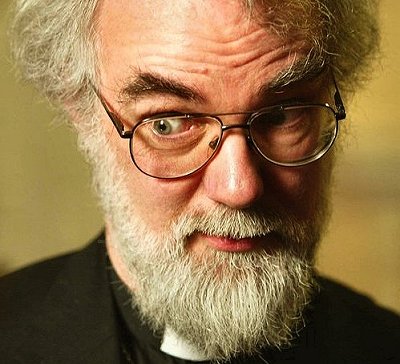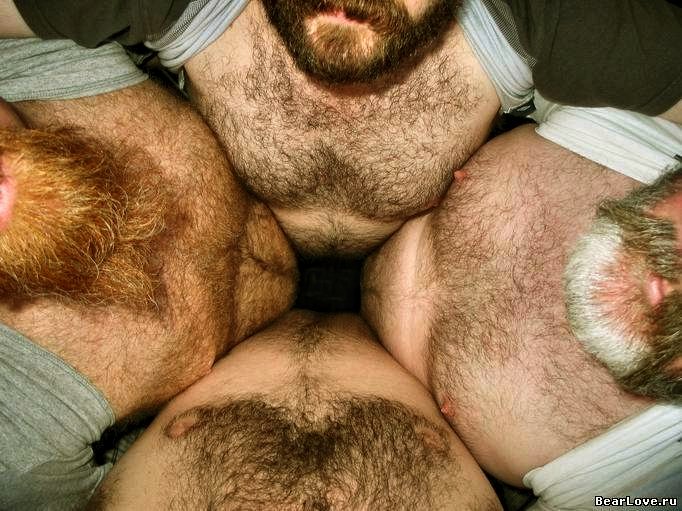|
Bizarre
is one of only three English words borrowed from Basque (the other
two are anchovy and Jingo, as in "By jingo!",
which derives from Jaincoa, the Basque name for God.
Barbados
is Portuguese for "bearded ones", although this is less
to do with the inhabitants than the thick vines that fringed the island's
trees. Frumbierding is an Old English word for a youth, from fruma, meaning "first", making it literally a "first-bearder". The Irish for beard is féasóg, deriving from fés : body-hair, but once used in English slang to mean 'face' – though this might conceivably derive from physiognomy.
In 16th-century France, the Huguenot Admiral Gaspard de Coligny used his beard as a toothpick-holder.
Alexander the Great is often credited with starting the fashion for soldiers shaving. He introduced it as a safety measure because many of his men died in hand-to-hand combat after their beards were grabbed by their enemies. This is probably untrue. A century earlier, King Tarquin II (535-509 BC) thought beards were unsanitary and brought the first razor to Rome. Hadrian (76-138 AD) was the first Roman emperor to sport a beard, allegedly to hide his scarred face. Until then, a beard meant you were either in mourning - or Greek. The most treacherous beard in history was that of Austrian Hans Steininger. It was more than two metres long and he kept it rolled and stowed in a leather pouch, but in 1567 he tripped over it while running from a fire, and perished. One of the CIA's more insane attempts to destabilise Cuba was to put toxic thallium salts in the shoes of Fidel Castro to make his beard fall out.
Periods when the removal of beards was de rigueur or fashionable are rare in European history, and even rarer in Western Asia. The first recorded period was in Greece during its period of decay, which was also the period when the Romans, having destroyed the Etruscan civilisation, went on to subdue and occupy the whole of Italy. Towards the end of the Roman Republic, Scipio Africanus introduced the Greek fashion, which remained through the collapse of the Republic right until the reign of the Emperor Hadrian in the first century. From then on, some emperors were shaven, and others had luxurious beards. After the fall of the Western Empire, beards became the norm. In the Eastern Empire, Christian Orthodoxy encouraged beards, especially in the clergy. When the Eastern Empire fell with Constantinople in 1453, the bearded, handsome Turks took over, and gradually occupied south-eastern Europe, where beards remained common right up to the 1920s.
Barbosity remained usual in the West until the beginning of the 15th century, when a pudding-bowl hairstyle and shaved face became popular among the upper classes. This lasted until the beginning of the 1520s, when the fashion for beards resumed amongst the princes and dukes of Italy, and quickly spread beyond the Alps. If shaving mimics the female face (and thus suggests androgyny), a beard mimics the female pubic area - and thus also has an androgynous quality. In the same years that beards came back into fashion, swords for the first time became fashionable accoutrements in polite company. This was a time of retro-fashion, with portraits of gentlemen holding helmets, wearing fancy spurs and breastplates.
Controversies raged in the 16th century over the wearing by, and proscription of beards on, the higher and lower clergy, but beards became so fashionable that even some popes sported splendid growths.
In Russia, Peter the Great tried to proscribe beards in the interests of 'modernisation'. On his return in 1698 from a Grand Tour of the West, where beards had become deeply unfashionable, he shaved off his advisers' beards himself and made those who defied the law pay a hefty fine and carry a special gold beard token. The last time that beards were actually proscribed in Eurasia was in post-war Albania, because Enver Hoxha (whose first name means 'Imam') hated Orthodox Christians and Bektashi Muslims alike - and hence their characteristic beards. Even the few tourists who were allowed into Albania had to be clean-shaven. The next period of general beardlessness started towards the end of the 17th century and coincided with the restoration of the monarchy in England and the accession to the French throne of the young, beardless Louis XIV, whose father sported a handsome moustache and a little triangular hairy bit under his mouth. I heard on the radio that Chopin wore a beard on only one side of his face. But by the middle of the 19th century, beards crept back into view, via military necessity during the Crimean War, and through the elongation of side-whiskers (or sideburns, named after the American general Burnside) which eventually met around the chin. Moustaches (which have a separate history, sometimes being fashionable when beards were not - as in the 1920s and 1930s) were added.
Queen Victoria recorded in her diary her orgasmic reaction to bearded 'heroes' returning from the Crimean War, during which the sanction against beards in the British army was lifted because of the difficulty of shaving. Almost everything in the second half of the 19th century was inspired by militarism and by militant Christianity, and beards are no exception. The greatest single influence, however, came from the richly-bearded Charles Dickens, who not only created the ghastly modern Christmas out of nothing, but also proselytised vehemently for the display of natural hirsute masculinity. He headed a 'beard movement' which reached its apogee in the 1880s. Needless to say, women were excluded from this movement. The devastating Frontier mentality of the USA associated beards with superiority (the natives were beardless), as did the empire-builders and snatchers of Europe. Abraham Lincoln was the first US President to sport a full beard (via converging side-whiskers). Four more followed, before President Taft bowed out at the beginning of the First World War, when beards quickly disappeared (their removal also encouraged by the discomfort of lice), and have not re-appeared until recently. However, President Clinton sported one in his pseudo-hippy phase, but would have been ineluctably unelectable for almost any important office had he retained it. Gillette's invention of the safety razor with disposable blade in 1904 enabled the subsequent rapid disappearance of beards, and the first World War finished them off because gas masks required a seal with smooth skin in order to function. The military requirement to grow a moustache was rescinded in 1917, and after the war was over, men rejected anything which reminded them of the trenches, where rats and piss, lice, Trench Foot and beards were inevitably associated. British politicians have tended to be trichophobic. One of the few British prime ministers to have a beard for a while - and a pathetic tuft at that - was Benjamin Disraeli. Beards started coming back into fashion after the turn of the second millennium, via the 'unshaven look' designed to emphasise the 'manly' jaw that beards tend to hide, a homo-erotic sub-culture which admires them for a variety of social and æsthetic reasons, and - again the military element - the return of bearded soldiers from Afghanistan. read more on the BBC website +>
- John Steinbeck in Travels
with Charley (1961)
The most impressive female beard in history belonged to Queen Hapshetsut (c. 1480 BC) who proclaimed herself Pharaoh after the death of her husband, Thutmose II, and wore a long, plaited false beard as part of her royal dress. St Wilgefortis and St Paula both sprouted miraculous beards to preserve their chastity by discouraging potential rapists.
The current world record holder is Vivian Wheeler from Illinois, who started growing her fine beard in 1993 after her mother's death. "It showed me I could be proud of being me," she said. "It made me feel like I had a chance in society." In the 16th century, hirsute ladies were not regarded as freaks. Members of the Gonzales or Gontsalvus family (from Tenerife) had a condition known as Hypertrichosis (excess of hair), and one of them, Antonietta, was painted in Parma 1585 (aged 11 or 12) by a female painter, Lavinia Fontana. This portrait can be seen in the Musée de Blois, in France. She is holding a handwritten account of her life up to that time. Her father, also wonderfully hairy, had been received as a boy into the French court, and became Royal Breadserver to king Henri II, but later moved to Italy.
The best known statue of Wilgefortis, however, is in the church of Loreto in Prague, in the Chapel of Our Lady of Sorrows. (Postcards are available.) The legend recounts that as a young noblewoman, Wilgefortis' father (in some versions he is the king of Portugal) had promised her to a pagan king (in some versions the King of Sicily, who might or might not have been a Moor and not a king). The pious Wilgefortis would have nothing to do with such defilement, so she took a vow of virginity and prayed for a miracle to save her from a fate worse than death.. Lo and behold! (for the Lord works in myserious ways) Wilgefortis sprouted a beard worthy of any freak-show. The engagement was, of course called off. Because the patriarchy is awesome, her father flew into a rage at her unfeminine miracle and had Wilgefortis crucified. She is now prayed to by women who wish to be “unencumbered” of abusive husbands, but it is a mystery which Edward Dowson, a seeker after young girls, prayed to a statue which only a pervert like myself would find attractive. The real story, however, is as good as the legend created to explain a wooden carving from the 11th century. The 'Volto Santo' or Holy Face in Lucca is an unbearded carving of Jesus on the cross, believed to have been the work of a certain Nicodemus.. Instead of the customary, attractively-arranged loin cloth, Jesus is less titillatingly clad in a full-length tunic. He was commonly clothed this way in the earlier Middle Ages, but the practice had been discontinued. Thus, when copies of the Volto Santo of Lucca began to appear in Northern Europe,.where real men wore trousers and women wore dresses, the unfamiliar image was explained by the wonderful legend of St Wilgefortis. This name derives from the Old High German “heilige Vartez”, or Holy Face. Wilgefortis became extremely popular in the fifteenth and sixteenth centuries, with different names all over Europe (Liberata, Kummernis, Uncumber, and (in France) Livrade), translating to everything from “Strong Virgin” to “The Liberator”. She is easy to overlook - but just keep an eye out for a statue that looks exactly like Jesus in a frock.
click here for an even more bogus saint and here for one perhaps a bit less bogus (6 on the Bogus Scale) |
trichoPHILY
RUE DE LA PETITE TRUANDERIE
I would like a lover
who looks like my teddybear
who will ask me to do
what I want to do
and travel with me
to the inner and the outer.
As for sex
I have no preference -
but not many women look like my
teddybear,
though I saw a splendidly
hirsute lady in Paris.
Bearded Men Kissing >
DUBUFFET
AND BEARDS
dubuffet agus féasóga



BEARD IN FULL BLOOM, BEARD IN ITS PRIME
I wallow in bed
until midday
the beardy-wine

beard-hair will-o'-the-wisp
beard-tail-cock with peeled soft-boiled egg
(nicely crisp)
exit this way out-inclining
beard on the chin beard on the nose
beard in the bum of the newly-born
your lovely eyes are shining

Beards have often been an indication of holiness or unworldliness.

Former Archbishop of Canterbury, Rowan Williams.
from the sublime to the gross...
Bearded Blokes of the Belle-Epoque >
VISIT MY ' HAIRY MOUTHFULS ' BLOG +>

This website has been empowered by FloatBox





























